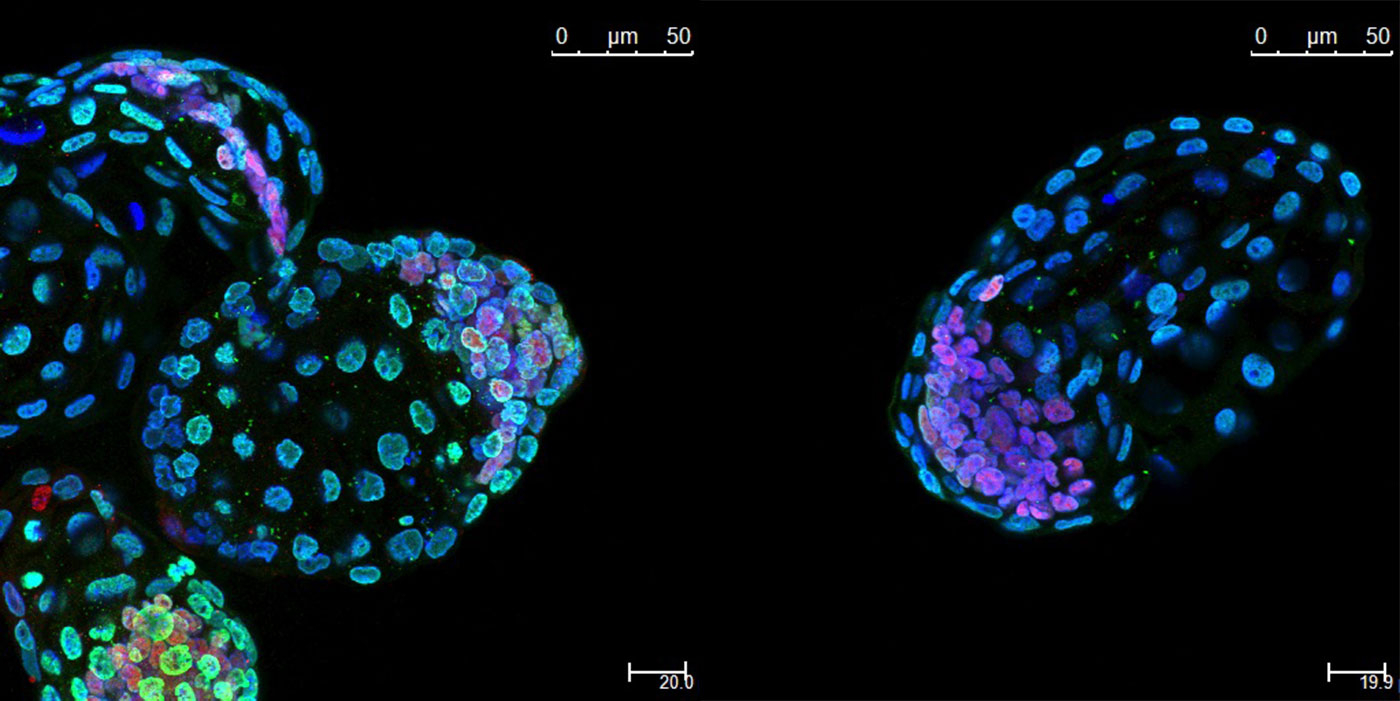Researchers plunged mouse embryos into anabiosis for a month without negative consequences.

Blastocyst in anabiosis
Researchers at the University of California at San Francisco have found a way to stop the development of mouse embryos for up to one month in the laboratory. Scientists are confident that their research has the potential to have an impact on assisted reproductive technologies, regenerative medicine, to stop aging and cancer.
In their study, scientists conducted an experiment with embryos at an early stage of development, called blastocysts . They found that drugs that inhibit the activity of the main regulator of cell growth, the mTOR protein, can immerse embryos in a stable and reversible state of anabiosis. As a rule, embryos can remain at the blastocyst stage under laboratory conditions for no more than two days. But therapy with mTOR inhibitors prolongs this condition for up to four weeks.
')
The lead author of the study, Aidan Bulut-Karsioglu, and his colleagues demonstrated that suspended embryos quickly resumed normal growth when scientists stopped introducing inhibitors of the cell growth regulator. When the embryos were returned to the mother’s body, healthy offspring developed from them.
The discovery came as a surprise to researchers who intended to study how mTOR inhibition slows down the growth of blastocyst cells, rather than finding a way to put embryos into hibernation. Subsequent experiments have shown that embryonic stem cells obtained from an embryo at the blastocyst stage can also be immersed in a state of anabiosis by inhibitors of the cell growth regulator. Apparently, the drugs act by reducing the activity of the gene in most of the genome, with the exception of a few dominant genes, which themselves can suppress the activity of others. Researchers tested a number of different mTOR inhibitors and found that the most effective is the new synthetic drug Rapa-Link, which was recently developed by the Kevan Shokat laboratory at the University of California, San Francisco.
Researchers believe that the state of anabiosis can be extended for a longer period than 30 days. Dormant blastocysts eventually die when they are running out of metabolites. If scientists find a way to supply nutrients to the culture medium, the cells will survive longer hibernation. But while the researchers do not know for sure what specific substances the blastocyst needs in anabiosis.
The authors of the study demonstrated that the quiescent state that they caused in the blastocyst, blocking mTOR, was almost identical to the innate ability of mice to suspend pregnancy in the early stages. This temporary stagnation - diapause - occurs in many mammals, from mice to marsupial wallabies . So pregnant females can delay the development of the fetus when there is not enough food. The mTOR protein in this situation acts as a regulator of developmental time, which works as a nutrient sensor. It seems to “tune” the process of cell development, relying on the level of nutrients available in the environment.
Does a person have the ability to suspend pregnancy at the blastocyst stage? So far this is an unresolved question: in modern conditions it is difficult to track the period from fertilization to implantation, in which the formation of the blastocyst occurs. However, there are some examples from the practice of in vitro fertilization (IVF) with an unusually long period of pregnancy and a mismatch between the periods of artificial transfer of embryos and genera. Based on these facts, researchers believe that people in some situations may delay the implantation of embryos.
Research can have a major impact on assisted reproduction, the practice of which is limited by the rapid degradation of embryos as soon as they reach the blastocyst stage. Blastocyst anabiosis can be an alternative to freezing embryos and will give doctors more time to look for genetic defects before implantation.
MTOR inhibitors are undergoing clinical trials, and in the future could overcome some types of cancer. However, the results of a new study demonstrate the potential danger of such an approach: mTOR inhibitors may slow down the development of cancer and shrink tumors, but “dormant” cancer cells, which can be activated and spread throughout the body after therapy is stopped, can be ignored. To kill the remaining cells, it is necessary to use drugs of the second and third line of therapy.
The authors are now seeking to find out if mTOR inhibitors can control stem cells at later stages of development. Such an opportunity would help repair or replace damaged organs. Scientists believe that the data obtained during the study also have potential value in the study of aging.
“This is a prime example of the power of fundamental science. We did not look for ways to halt the development of the blastocyst or mimic diapause. We did not try to create an effective therapy against cancer or to develop more effective methods for tissue regeneration or organ transplantation. All this was in our minds, but the experiments prompted us that we were moving towards something that we had to understand and could not ignore where they had led, ”said laboratory head Miguel Ramalo Santos, associate professor of obstetrics, gynecology and reproductive sciences in University of California, San Francisco.
In theory, a similar technology of cryopreservation of embryos at an early stage of development and their transportation will thus allow to colonize space. There are several different views on how colonization will take place. The bottom line is that fully autonomous robots will deliver the “cargo” to a planet suitable for life, prepare all the conditions for a normal human existence, and then unfreeze the embryos. However, researchers from the University of California at San Francisco did not mention that their discovery could contribute to the development of this concept. To bring this theory of the colonization of space to life, an artificial womb is needed that "carries" the fruit.
Scientific work published in the journal Nature November 23, 2016
DOI: 10.1038 / nature20578
Source: https://habr.com/ru/post/399527/
All Articles